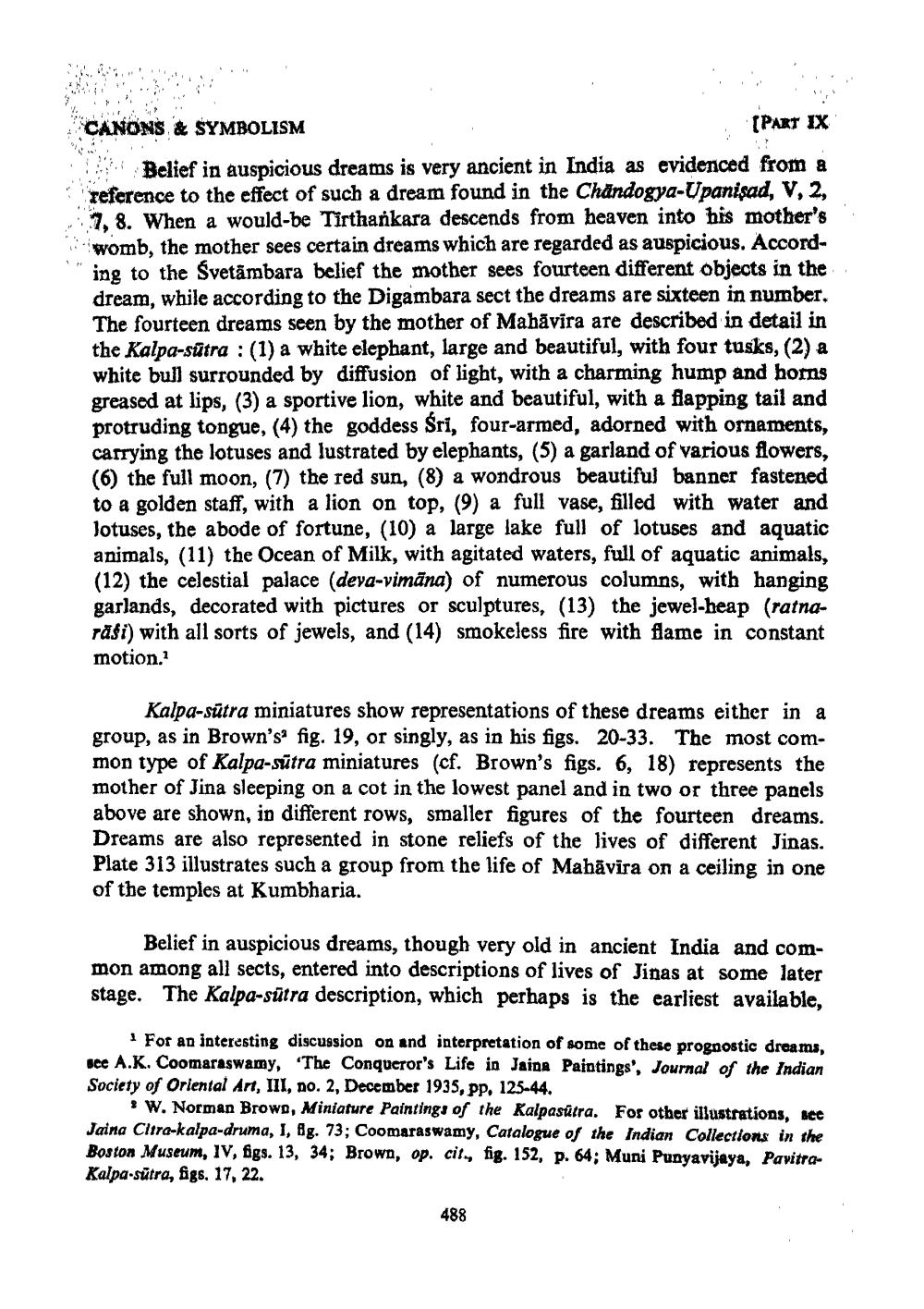________________
CANONS & SYMBOLISM
[PAT IX Belief in auspicious dreams is very ancient in India as evidenced from a reference to the effect of such a dream found in the Chandogya-Upanisad, V, 2, 7, 8. When a would-be Tirthankara descends from heaven into his mother's womb, the mother sees certain dreams which are regarded as auspicious. According to the Svetämbara belief the mother sees fourteen different objects in the dream, while according to the Digambara sect the dreams are sixteen in number. The fourteen dreams seen by the mother of Mahāvira are described in detail in the Kalpa-sūtra :(1) a white elephant, large and beautiful, with four tusks, (2) a white bull surrounded by diffusion of light, with a charming hump and horns greased at lips, (3) a sportive lion, white and beautiful, with a flapping tail and protruding tongue, (4) the goddess Sri, four-armed, adorned with ornaments, carrying the lotuses and lustrated by elephants, (5) a garland of various flowers, (6) the full moon, (7) the red sun, (8) a wondrous beautiful banner fastened to a golden staff, with a lion on top, (9) a full vase, filled with water and lotuses, the abode of fortune, (10) a large lake full of lotuses and aquatic animals, (11) the Ocean of Milk, with agitated waters, full of aquatic animals, (12) the celestial palace (deva-vimāna) of numerous columns, with hanging garlands, decorated with pictures or sculptures, (13) the jewel-heap (ratnarasi) with all sorts of jewels, and (14) smokeless fire with flame in constant motion.
Kalpa-sutra miniatures show representations of these dreams either in a group, as in Brown's fig. 19, or singly, as in his figs. 20-33. The most common type of Kalpa-sútra miniatures (cf. Brown's figs. 6, 18) represents the mother of Jina sleeping on a cot in the lowest panel and in two or three panels above are shown, in different rows, smaller figures of the fourteen dreams. Dreams are also represented in stone reliefs of the lives of different Jinas. Plate 313 illustrates such a group from the life of Mahāvira on a ceiling in one of the temples at Kumbharia.
Belief in auspicious dreams, though very old in ancient India and common among all sects, entered into descriptions of lives of Jinas at some later stage. The Kalpa-sütra description, which perhaps is the earliest available,
1 For an interesting discussion on and interpretation of some of these prognostic dreams, sce A.K. Coomaraswamy, The Conqueror's Life in Jains Paintings', Journal of the Indian Society of Oriental Art, III, no. 2, December 1935, pp. 125.44.
W. Norman Brown, Miniature Paintings of the Kalpasūtra. For other illustrations, see Jaina Citra-Kalpa-druma, I, 8g. 73; Coomaraswamy, Catalogue of the Indian Collections in the Boston Museum, IV, figs. 13, 34; Brown, op. cit., fig. 152, p. 64; Muni Punyavijaya, PavitraKalpa-Sutra, figs. 17, 22.
488




